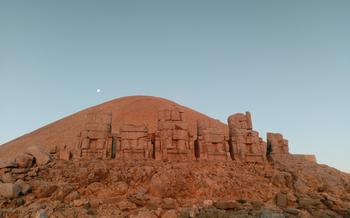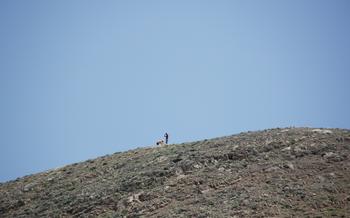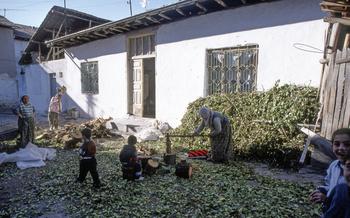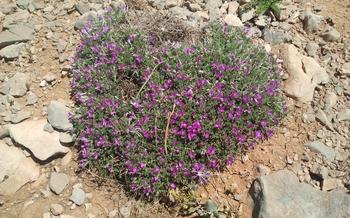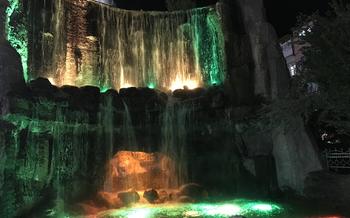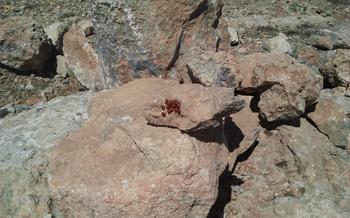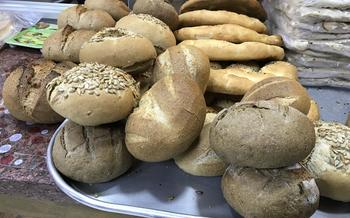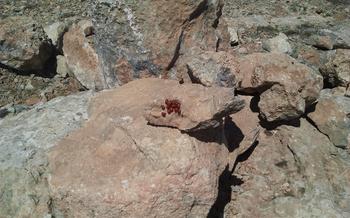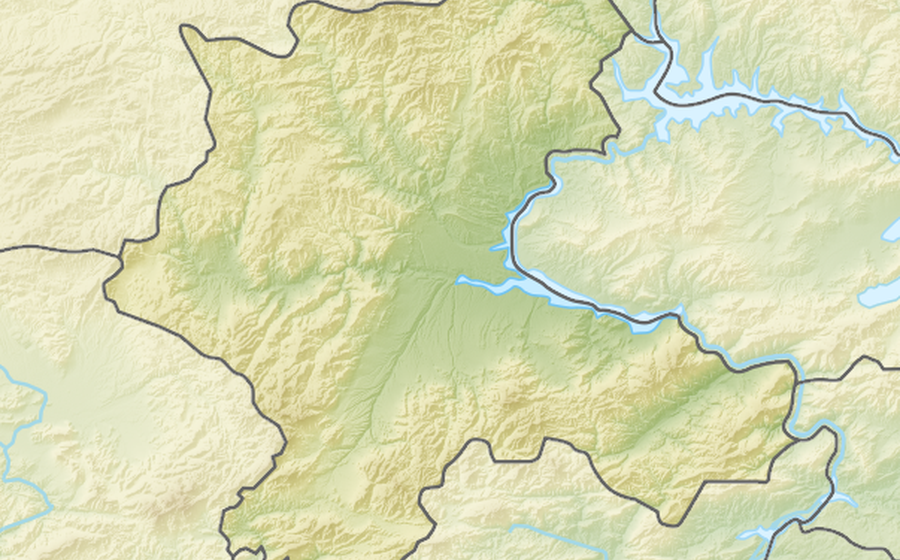
Kamıştaş Cave
- Kamıştaş Cave: A Journey Through Time
- Geographical Location
- Archaeological Discoveries
- Domestication of Cereals
- Neolithic Structures
- Paleoenvironmental Data
- Interactive Exhibits
- Guided Tours
- Visitor Facilities
- Photography and Videography
- Local Handicrafts and Souvenirs
- Tips for Visiting
- Nearby Attractions
- Insider Tip: Unveiling the Hidden Chamber
Kamıştaş Cave: A Journey Through Time
Kamıştaş Cave, a treasure trove of archaeological wonders, holds immense historical significance. It is recognized as the earliest known site of cereal agriculture, a breakthrough that transformed human civilization. The cave's excavation has revealed Neolithic era structures, providing invaluable insights into the lives of our ancestors and the development of human society. Kamıştaş Cave stands as a testament to Turkey's rich and diverse history, offering a glimpse into the origins of agriculture and the evolution of human culture.
Geographical Location
Kamıştaş Cave is situated in the heart of Turkey, in the picturesque province of Malatya. It is nestled amidst the foothills of the majestic Taurus Mountains, approximately 15 kilometers southwest of the city of Malatya. The cave lies within the boundaries of the Doğanşehir district, a region renowned for its rich cultural heritage and natural beauty.
In close proximity to Kamıştaş Cave, one can find several other significant historical sites. The ancient city of Arslantepe, with its impressive Hittite ruins, is located just 30 kilometers to the northeast. To the south, approximately 50 kilometers away, lies the mesmerizing Nemrut Mountain, home to the colossal statues of King Antiochus I Theos of Commagene. These remarkable landmarks, along with Kamıştaş Cave, form a captivating historical triangle that attracts visitors from around the world.
The cave's accessibility is a major advantage for tourists. It is conveniently situated near the main road connecting Malatya to Kahramanmaraş, making it easily reachable by car. Additionally, public transportation options are available, with buses departing regularly from Malatya city center to Doğanşehir, from where one can easily arrange a taxi or local transportation to the cave.
Archaeological Discoveries
Extensive excavations at Kamıştaş Cave have unearthed a treasure trove of archaeological artifacts, providing valuable insights into the lives of prehistoric people. Among the most significant findings are a diverse array of tools, including stone blades, scrapers, and grinding stones, which shed light on the technological capabilities of the cave's inhabitants. Additionally, the discovery of pottery fragments, some adorned with intricate designs, offers a glimpse into their artistic expressions.
Skeletal remains found at the site have provided researchers with a wealth of information about the physical characteristics and health status of the people who lived in the cave. These remains have revealed evidence of injuries and diseases, as well as insights into their diet and lifestyle. The presence of both human and animal bones has also allowed researchers to study the interactions between humans and their environment.
The archaeological discoveries at Kamıştaş Cave have significantly contributed to our understanding of prehistoric human behavior. By piecing together the evidence from tools, pottery, and skeletal remains, researchers have gained insights into the technological, artistic, and social aspects of life in this ancient community. Ongoing research and future exploration at the cave hold the promise of further enriching our knowledge of human history.
Domestication of Cereals
Kamıştaş Cave holds immense significance as the earliest known site of cereal domestication, a pivotal development that marked the transition from hunting-gathering to agriculture. This discovery has revolutionized our understanding of the origins of agriculture, one of the most fundamental transformations in human history. Excavations at the cave have unearthed compelling evidence for the cultivation of wheat and barley, dating back to the early Neolithic period around 10,000 years ago. These findings suggest that the domestication of cereals occurred in the Fertile Crescent region, where Kamıştaş Cave is situated, and subsequently spread to other parts of the world. The presence of grinding stones and storage pits at the site further supports the notion that these early inhabitants were actively engaged in cereal cultivation and processing. This groundbreaking discovery at Kamıştaş Cave has provided crucial insights into the origins of agriculture, shedding light on the pivotal role that this region played in shaping the course of human civilization.
Neolithic Structures
Kamıştaş Cave boasts intriguing Neolithic structures that provide a glimpse into the lives of prehistoric inhabitants. The remains of hearths, storage pits, and other features offer valuable insights into the daily activities and settlement patterns of these ancient people. These structures, expertly constructed using available materials, reveal the ingenuity and resourcefulness of the Neolithic communities that once called the cave home.
The hearths, often found near the center of the cave, suggest that cooking and communal gathering took place within the shelter. Storage pits, carefully dug into the cave floor, served as repositories for grains, legumes, and other provisions. These structures demonstrate the foresight and planning of the Neolithic people, who skillfully managed their resources to ensure survival.
The architectural features of these Neolithic structures reflect the adaptability and innovation of their builders. Using locally available stones and other materials, they created sturdy and functional spaces within the cave's natural contours. The careful placement of these structures within the cave's topography suggests a deep understanding of their environment and a harmonious relationship with nature.
The study of these Neolithic structures at Kamıştaş Cave contributes significantly to our knowledge of prehistoric settlement patterns and the daily lives of early farming communities. These remains provide tangible evidence of the ingenuity, resourcefulness, and adaptability of our ancestors, offering a fascinating glimpse into the foundations of human civilization.
Paleoenvironmental Data
Kamıştaş Cave holds immense value as a source of paleoenvironmental data, providing insights into past climate and ecological conditions. The analysis of plant remains, including pollen and phytoliths, and animal bones helps reconstruct the vegetation and faunal composition of the region over time. This data sheds light on the dynamic relationship between humans and their environment in the past. By studying the changing plant and animal communities, researchers can infer climatic fluctuations, habitat changes, and human impacts on the surrounding landscape. The paleoenvironmental data from Kamıştaş Cave complements the archaeological findings, offering a comprehensive understanding of the site's significance in the context of past human behavior and environmental adaptations.
Interactive Exhibits
Kamıştaş Cave Museum offers a range of interactive exhibits and displays that bring the archaeological findings and history of the site to life. Through multimedia presentations, dioramas, and hands-on activities, visitors can immerse themselves in the world of the Neolithic inhabitants and gain a deeper understanding of their way of life. These interactive exhibits are designed to engage visitors of all ages, making the museum an educational and enjoyable experience for families, students, and history enthusiasts alike.
Guided Tours
Kamıştaş Cave offers guided tours that provide visitors with an immersive and informative experience. Led by knowledgeable and experienced guides, these tours delve into the rich history, archaeological discoveries, and cultural significance of the cave. Visitors can choose from a variety of tour options, tailored to different interests and time constraints.
The guided tours typically begin with an introduction to the cave's history and its status as one of the most important Neolithic sites in the world. Guides then lead visitors through the cave, showcasing significant archaeological features such as hearths, storage pits, and Neolithic structures. They provide detailed explanations of the artifacts discovered at the site and their relevance to our understanding of prehistoric human behavior.
Tours also highlight the cave's role in the domestication of cereals, emphasizing its importance as the earliest known site where wheat and barley were cultivated. Guides explain the significance of this discovery for understanding the transition from hunting-gathering to agriculture and its impact on the development of human civilization.
By participating in a guided tour, visitors gain a deeper appreciation for the historical, archaeological, and cultural significance of Kamıştaş Cave. The knowledgeable guides provide valuable insights and answer questions, ensuring that visitors leave with a comprehensive understanding of this remarkable site.
Visitor Facilities
Kamıştaş Cave offers a range of facilities to enhance the visitor experience and cater to their needs. A well-stocked museum shop presents an opportunity to purchase unique souvenirs, including locally crafted pottery, intricate textiles, and shimmering jewelry. These items not only serve as mementos of your visit but also support local artisans, preserving traditional crafts and contributing to the local economy.
For those seeking refreshments, a cozy cafe provides a welcoming space to relax and savor delicious snacks or beverages. Enjoy a steaming cup of Turkish coffee or tea, accompanied by traditional pastries or local delicacies. The cafe offers indoor and outdoor seating, allowing visitors to soak in the stunning surroundings while they recharge.
**
Photography and Videography
Respecting the Sacredness of the Past
Photography and videography are welcomed at Kamıştaş Cave, allowing visitors to capture the essence of this ancient site. However, it is crucial to respect the sanctity of the environment and the privacy of other visitors. Always seek permission before photographing or filming people, and be mindful of the delicate nature of the artifacts and structures. Using a tripod and a wide-angle lens can help you achieve stunning results without disturbing the tranquility of the cave. Remember, the memories you create here should be cherished, not exploited.
Local Handicrafts and Souvenirs
The Kamıştaş Cave Museum Shop offers a unique opportunity to purchase local handicrafts and souvenirs. These items are not only beautiful and authentic but also support local artisans and preserve traditional crafts. Visitors can choose from a wide variety of items, including pottery, textiles, and jewelry. Each piece is handcrafted with care, showcasing the skill and artistry of the local craftsmen.
Among the popular items available at the museum shop are hand-painted ceramics, intricately woven carpets, and delicate jewelry made from silver and semi-precious stones. Visitors can also find unique souvenirs such as replicas of ancient artifacts discovered at the cave, making for a memorable memento of their visit. By purchasing these handicrafts, visitors not only take home a piece of Turkey's rich history but also contribute to the preservation of traditional crafts and support the local economy.
Tips for Visiting
To ensure a fulfilling visit to Kamıştaş Cave, consider these practical tips:
-
Dress appropriately: Opt for comfortable clothing and sturdy, closed-toe shoes that provide good traction for navigating the cave's uneven surfaces.
-
Bring lighting: While the cave is well-lit in most areas, having a flashlight or headlamp handy is advisable for exploring darker corners and crevices.
-
Plan your timing: To avoid crowds and enjoy a more intimate experience, plan your visit during the shoulder seasons (spring and autumn) when tourism is typically lower.
-
Combine attractions: Make the most of your trip by combining your visit to Kamıştaş Cave with other nearby attractions, such as the Arslantepe Mound or the Malatya Museum, to create a well-rounded itinerary.
Nearby Attractions
In addition to Kamıştaş Cave, visitors to the region can explore a wealth of nearby attractions that offer a diverse range of historical, natural, and cultural experiences. Here are a few suggestions:
-
Arslantepe Mound: Located just 15 kilometers from Kamıştaş Cave, this ancient settlement dates back to the 5th millennium BCE and is considered one of the earliest centers of urban civilization in the region. Explore the impressive ruins of the city walls, temples, and palaces, and marvel at the intricate stone carvings that adorn the site.
-
Malatya Museum: This museum houses a rich collection of artifacts from the region, including many fascinating pieces from Kamıştaş Cave. Learn more about the history and culture of Malatya through its archaeological treasures, including tools, pottery, jewelry, and sculptures.
-
Battalgazi Castle: Perched atop a hill overlooking Malatya, this imposing castle offers breathtaking panoramic views of the city and the surrounding countryside. Built in the 13th century, the castle served as a strategic military stronghold and is a testament to the region's rich history.
-
Malatya Apricot Gardens: Malatya is renowned for its delicious apricots, which are celebrated each year at the Malatya Apricot Festival. Take a stroll through the picturesque apricot orchards, savor the sweet and juicy fruit, and learn about the traditional methods of cultivation.
-
Mount Nemrut: Located approximately 100 kilometers from Kamıştaş Cave, this UNESCO World Heritage Site features the colossal statues of King Antiochus I of Commagene and various Greek and Persian deities. Marvel at the engineering prowess and artistic skill that went into creating these impressive sculptures, which have stood the test of time.
Whether you are interested in history, archaeology, nature, or gastronomy, the region surrounding Kamıştaş Cave offers something for everyone. Plan your itinerary to include some of these nearby attractions and immerse yourself in the rich cultural heritage and natural beauty of Malatya.
Insider Tip: Unveiling the Hidden Chamber
For an extraordinary experience, venture beyond the main chambers of Kamıştaş Cave to discover a hidden gem – the Secret Chamber. This secluded chamber, accessible through a narrow passage, reveals a breathtaking sight: a pristine underground lake with crystal-clear waters that shimmer under the dim light. The serene atmosphere and the untouched beauty of this hidden chamber create a magical moment that transports visitors back in time. To access the Secret Chamber, follow the signs from the main cave and be prepared for a short but thrilling crawl through a narrow tunnel. Remember to bring a flashlight or headlamp to illuminate your path and capture the stunning beauty of this hidden wonder.
